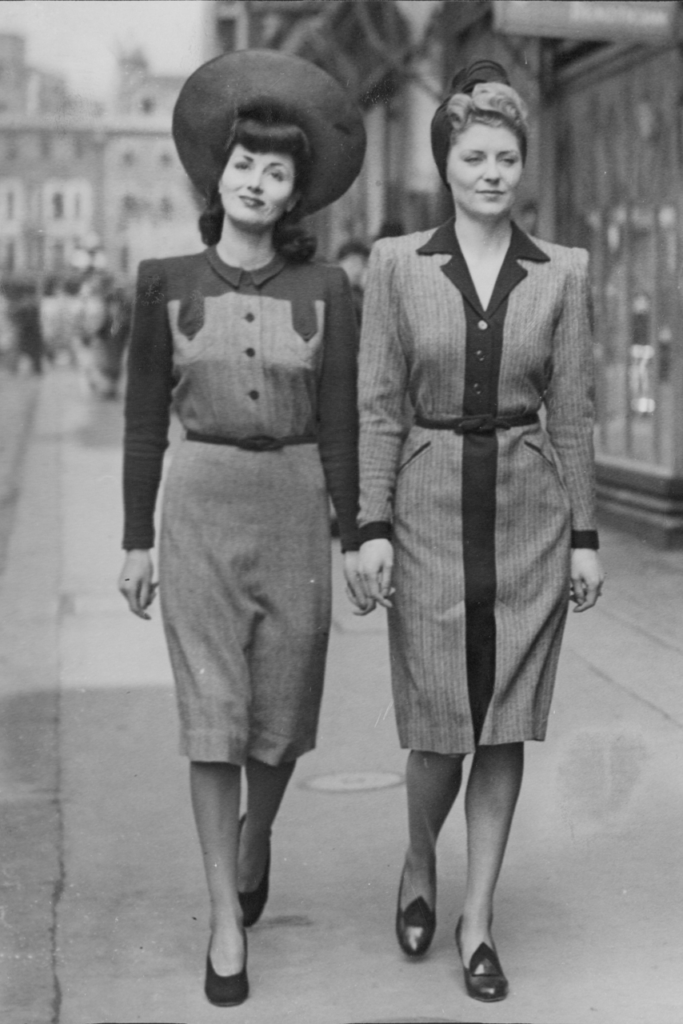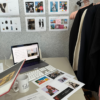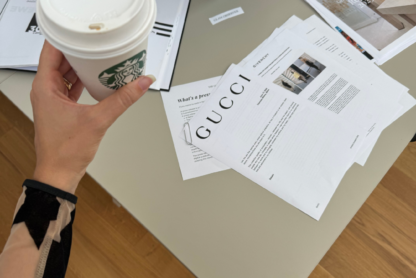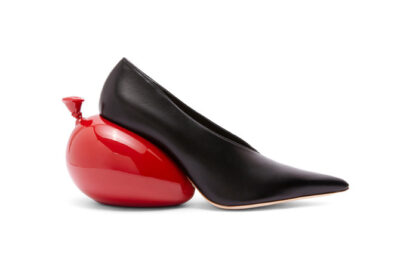Fashion in the 1940s: What was it like?
You might be curious how the fashion scene looked during World War II. The industry and its designers weren’t spared the difficult times, with some houses operating during the occupation, others closing, and imposed rationing on textiles. Even so, the 40s introduced new trends, and put American fashion on the map. Finally, postwar fashion saw a glorious renaissance, from the liberating bikini to the epitome of elegance – the iconic Dior’s “New Look”.
Let’s explore this interesting chapter in fashion history.
Fashion during World War II
During the Second World War, the couture industry was tightly regulated, especially in Paris which was the main fashion capital at the time and under German occupation, as well as Great Britain. To better equip the war efforts, various measures were taken to preserve resources, leading to severe rationing of textiles and leather goods. WWII thus had a profound impact on fashion in the first half of the 1940s, and even after the war had ended.
In Paris, major houses remained open in the occupied city, including Lucien Lelong, Jeanne Lanvin, and Balenciaga. Other designers, even the big names like Coco Chanel, decided to shut down their operations during the war (she reopened her store in 1954), and many flew abroad, like Elsa Schiaparelli who moved to New York in 1941.
Fashion Trend of the 1940s: Utility Clothing
The 1940s put an end to the glitz and glamour of the 1930s and fashion suddenly became practical. The outbreak of World War II led to a shortage of materials and rationing, and in this context, designers privileged simplicity and practicality. Men and women who served during the war wore uniforms. And for those who were not, their clothing styles were dictated by utility clothing, which could be bought with ration coupons.
In Great Britain, the government launched a Utility Clothing Scheme known as CC41, enlisting top designers of the moment, like Edward Molyneux, Hardy Amies, and Norman Hartnell to produce utility garments.
A common utility look had padded shoulders, a cinched waist, and hemlines below the knee.

The Rise of American Fashion during WW2: The First Press Week
As you may know, the couture industry was born in Paris, so American journalists, buyers, and designers often traveled there to see what was happening on the Parisian fashion scene and import French designs overseas, or copycat them. However, the arrival of World War II and the Nazi occupation made it impossible for U.S. journalists to travel to Paris. This is when Eleanor Lambert – America’s first fashion publicist – saw a unique opportunity to diverge the attention from Paris and grow the fashion week scene in the U.S., launching the first “Press Week” in New York’s Plaza Hotel on July 19, 1943.
Press Week, (this is how “New York Fashion Week” was originally called) encouraged American designers like Claire McCardell, Hattie Carnegie, and Norman Norell to showcase their creations in their country and promote them to the public.
Eleanor Lambert invited journalists and editors from New York and all around the country to join. It was focused on the press only indeed; buyers had to schedule separate visits to showrooms. July was a strategic date so that the press could see the collections and write about them a few weeks before they’d hit the stores.
The event was a success, marking the first time the world would hear about American fashion designers. They were finally able to fill the void created by the absence of designs coming out of occupied Paris. For example, in 1942, McCardell introduced the “Popover” wrap dress. The practical and versatile model could be used as a housedress, a party dress, a swimsuit cover-up, etc.

Postwar Fashion in Paris
Although the war ended in 1945, life did not immediately go back to normal and that included fashion. Although the designers regained their ability to design and sell their creations, they still faced the problem of a shortage of fabrics, which made it complicated to create entire collections.
But this didn’t stop Paris from wanting to restore the couture industry to its former glory and raise money for war efforts. Raoul Dautry, France’s Minister of Reconstruction and Urban Development, was looking for ideas to organize a fundraising event. Robert Ricci, son of designer Nina Ricci, had this amazing idea to create a miniature collection, using 27-inch-tall dolls instead of real women to model the designs which, obviously, required much less fabric. To bring his idea to life, Ricci sought the collaboration of top fashion designers and eventually turned to Lucien Lelong, then President of the Chambre Syndicale de la Couture Parisienne. Together, they ideated the Théâtre de la Mode exhibition.
Théâtre de la Mode
On March 28, 1945, 40 couturiers participated in the exhibition “Théâtre de la Mode” (Theater of Fashion) at the Louvre’s Marsan Pavilion and showcased their designs on miniature dolls. Among them were Dior, Balenciaga, Balmain, Schiaparelli, Paquin, Jean Patou, Hermès, Madame Grès, Nina Ricci, Carven, Fath, and Lucien Lelong. Artist Jean Cocteau, illustrator Christian Bérard, and sculptor Joan Rebull contributed to making the dolls and creating the imaginative sets.
The Théâtre de la Mode was a fashion event like no other in fashion history and marked a defining moment for fashion in the 1940s. On one hand, it was a celebration of hope and beauty after the war. On the other hand, the event helped to restore the glory and reputation of big couture houses and make Paris the center of fashion again. Finally, the event fulfilled its purpose as a fundraiser, helping to raise over a million Francs for the rehabilitation of shattered villages in France.
The exhibition lasted two months and welcomed 100,000 visitors. It then went on to travel the world through Barcelona, London, Leeds, Copenhagen, Stockholm, Vienna, New York, and San Francisco, and eventually to Washington’s Maryhill Museum of Art, which currently holds a permanent exhibit of Théâtre de la Mode, living as one of the most important fashion exhibitions and couture collections ever created.
After the Théâtre de la Mode, there were two other defining moments for fashion in the 1940s: the introduction of the first-ever bikini and Dior’s New Look.
The First-Ever Bikini
One of the results of rationing was the invention of the bikini. Two designers are credited for its invention. On one hand, Jacques Heim, a French fashion designer, created a minimalist two-piece swimming garment in May 1946 and called it “the Atome”, suggesting that the bikini was as small as an atom. On the other hand, in July 1946, Louis Réard created what he called “the Bikini”.“The Atome” and “The Bikini” were perceived as metaphors for the explosive effect the bikini had on fashion and society in the 40s.
Although Heim’s garment was the first to be worn on a beach, it was Réard’s bikini that stuck. The design was so provocative in appearance that most models refused to wear it, but it was eventually showcased by a 19-year-old nude dancer Micheline Bernardini inside the Molitor swimming pool in Paris.
The invention of the bikini became one of the most significant moments in the history of swimwear and women’s fashion in general. It was a controversial piece, many people found it scandalous but it was also welcomed by others because it stood for women’s emancipation, which was increasing after the Second World War. Diana Vreeland, Vogue’s former editor-in-chief, called the bikini “the most important thing since the atom bomb.”
Dior’s New Look
After the war, utility clothing quickly lost its appeal when on February 12, 1947, Christian Dior introduced his debut collection and the iconic “New Look”. The look was groundbreaking, much ahead of its time with the cinched-in waist and embodied full skirt. The fashion world had never seen such elaborate designs, using an abundance of fabric to create his lavish, elegant look to celebrate women; it was unheard of to use so much fabric due to restrictions on clothing imposed by the war. But Dior wanted to celebrate life after the war and embrace women’s beauty and feminity encouraging joy and extravagance again. The New Look remained the style reference for the rest of the decade and most of the 1950s. We talk more about the evolution of Dior’s New Look in this article.

Want to learn more about the history of fashion? Subscribe to our premium newsletter 365 days of fashion.






